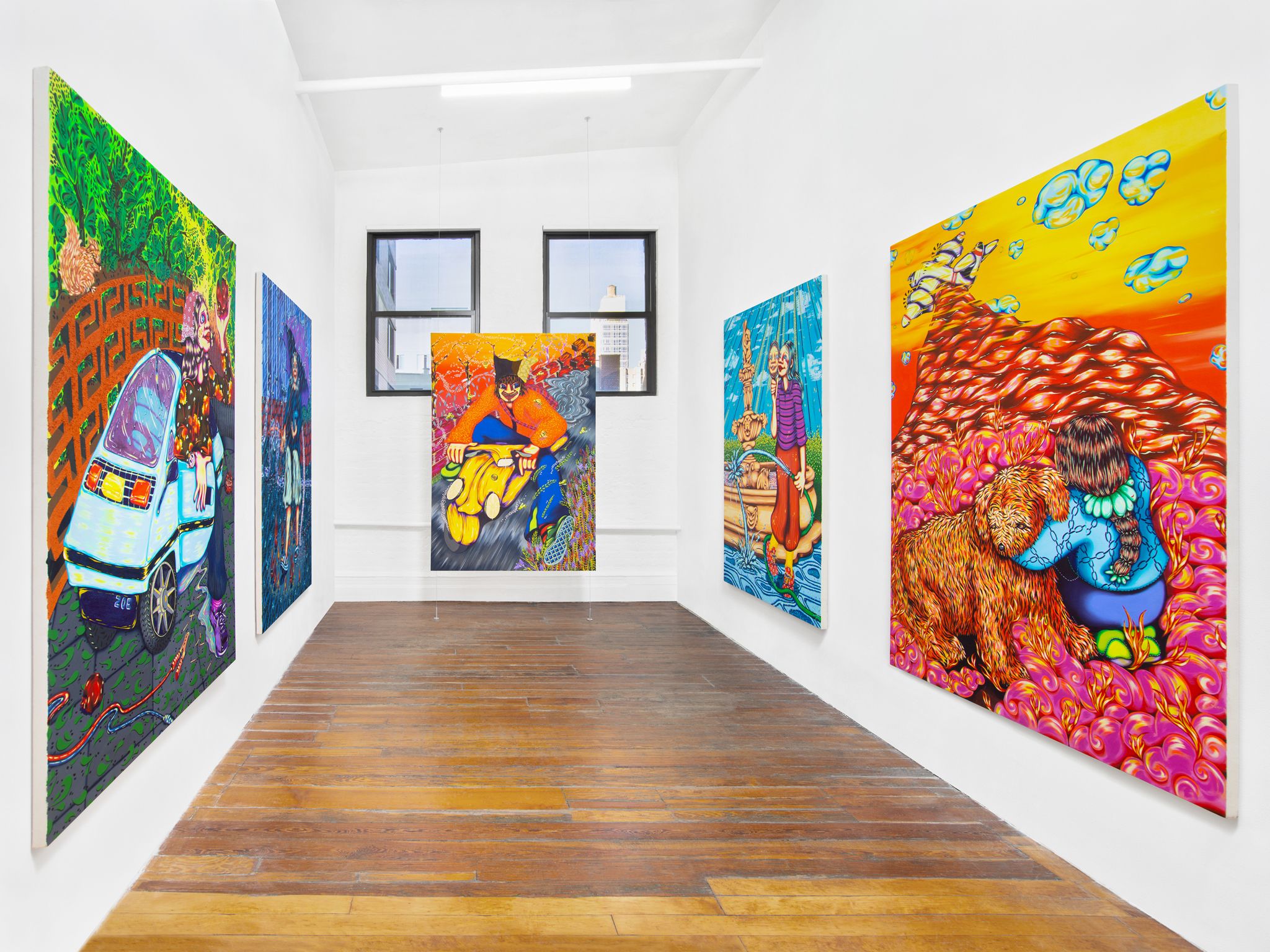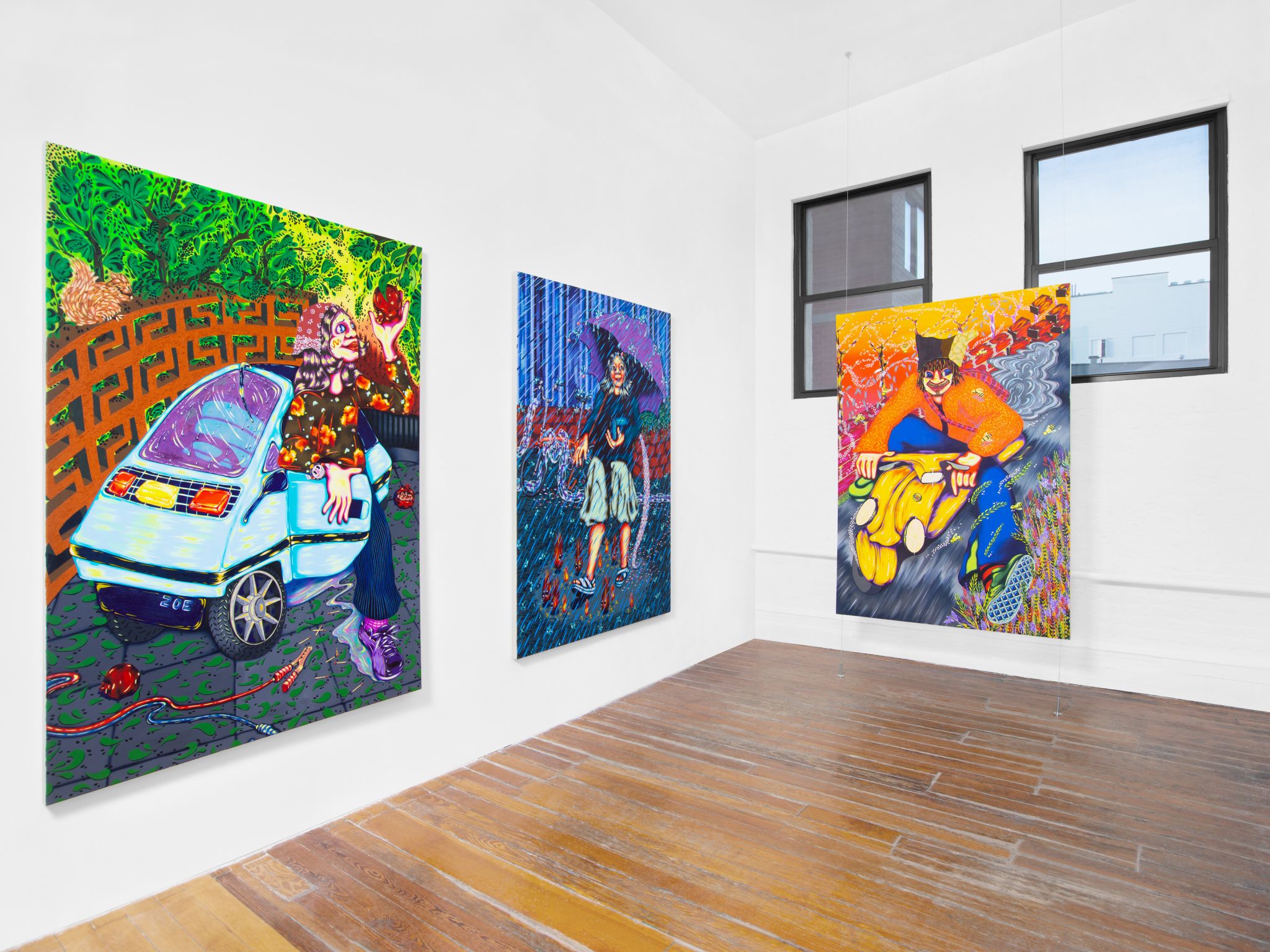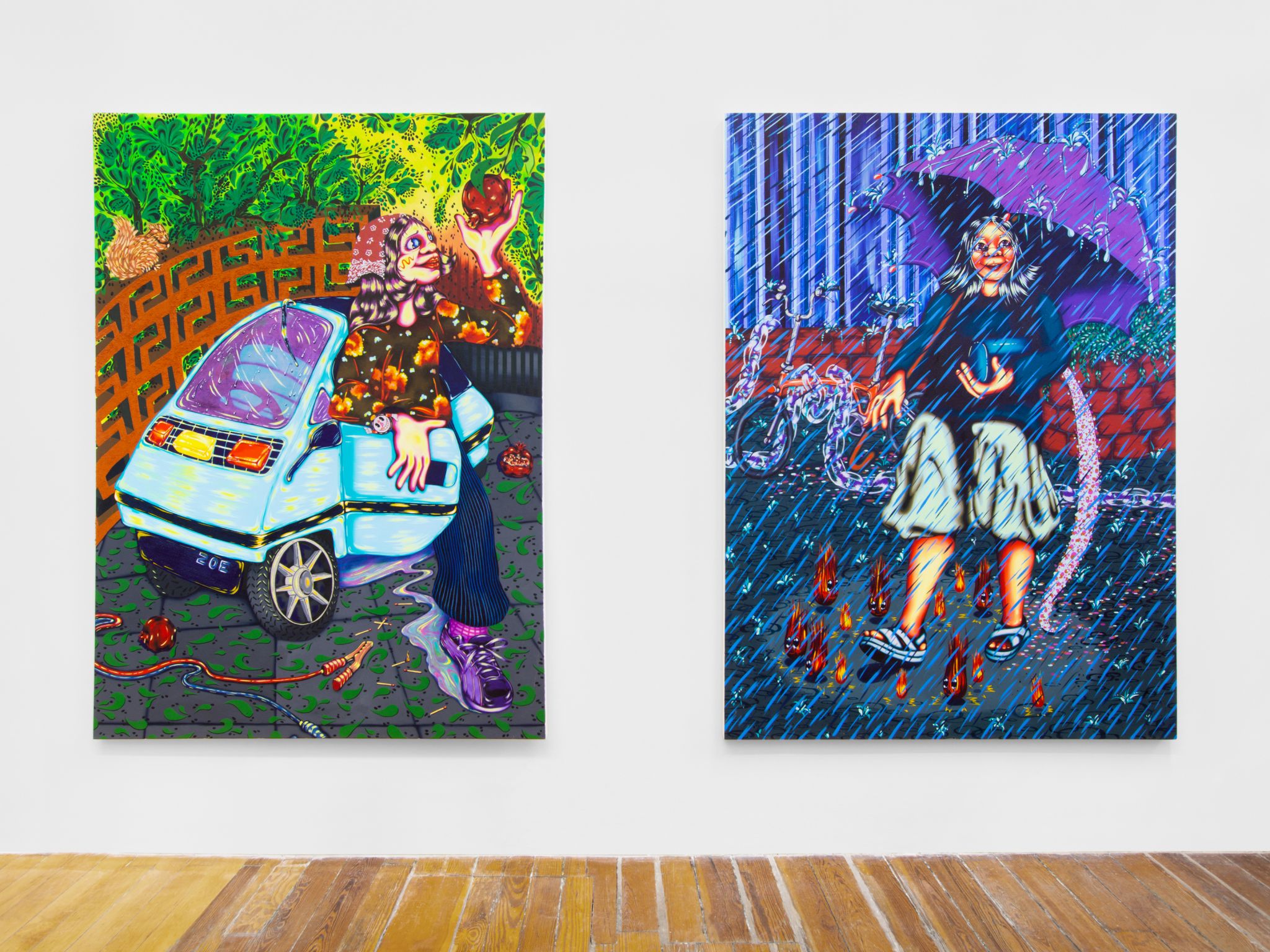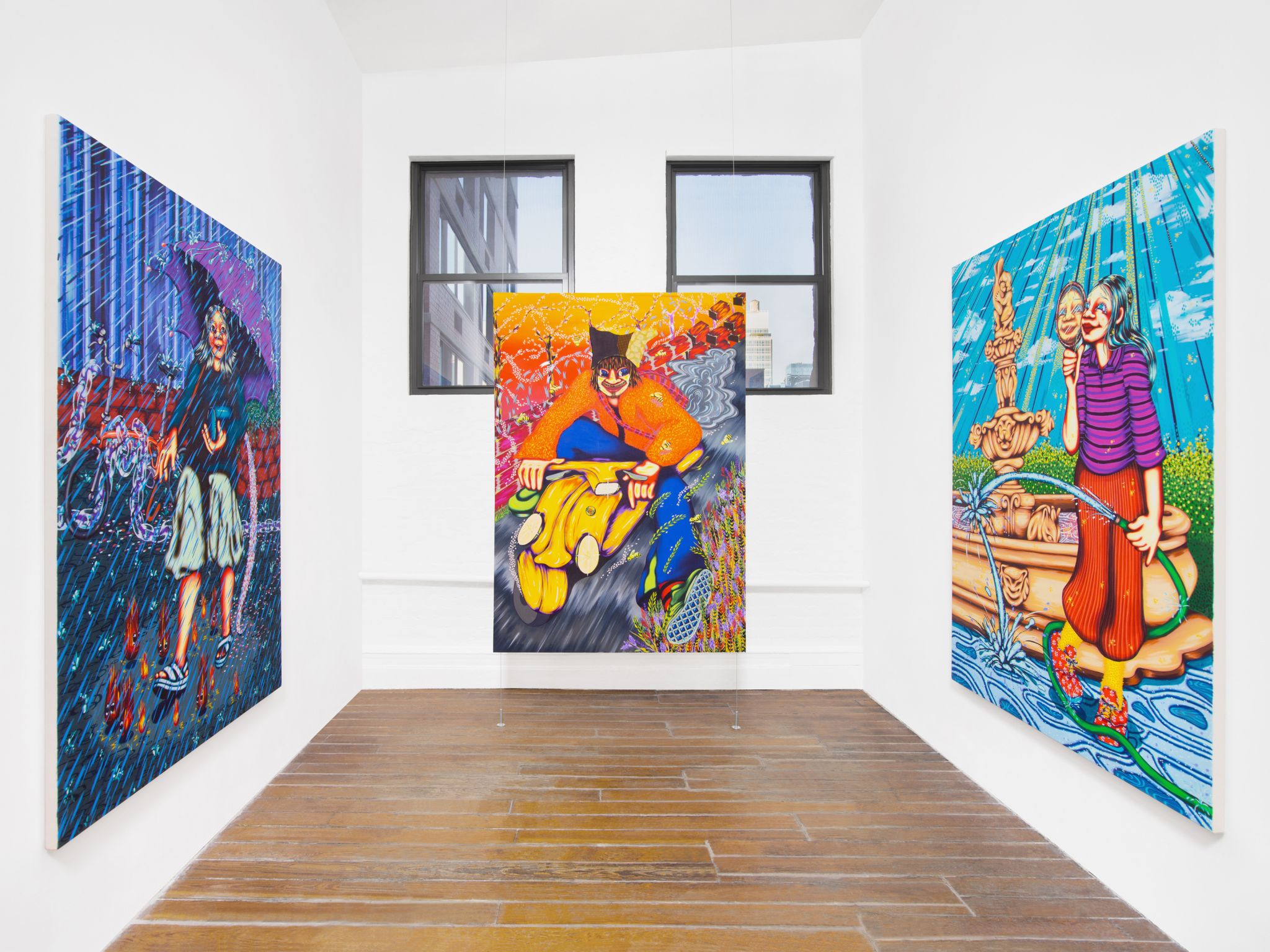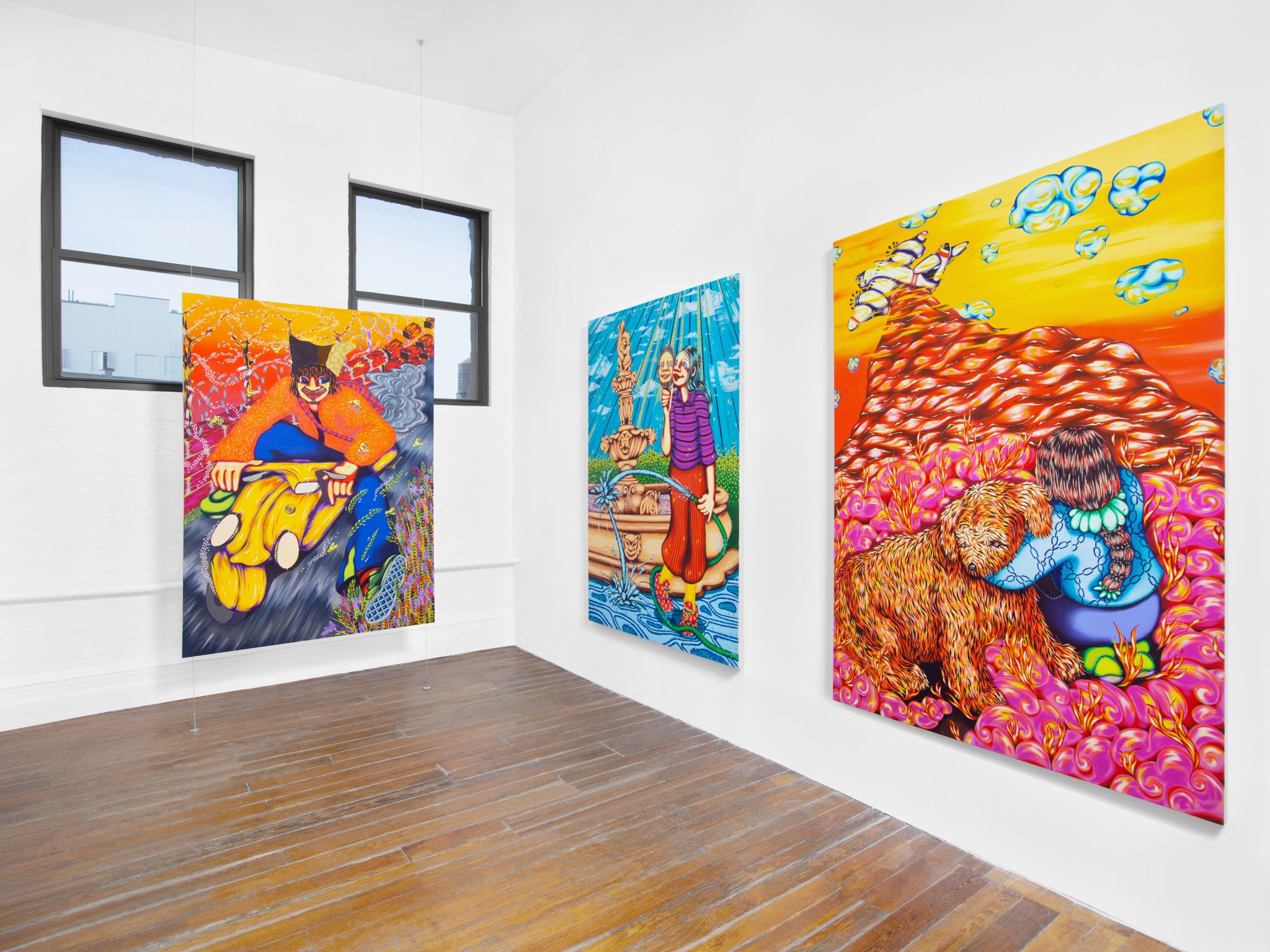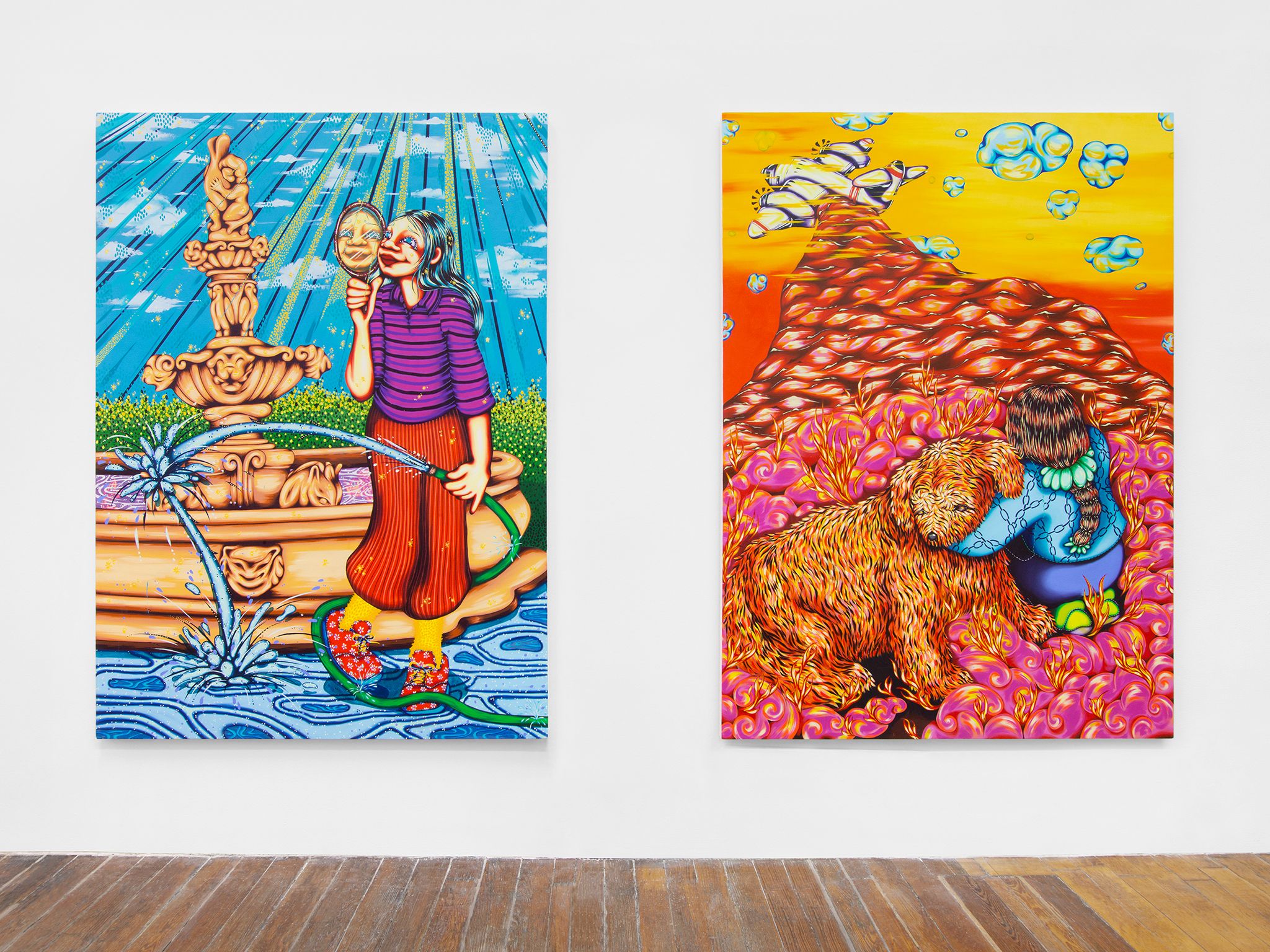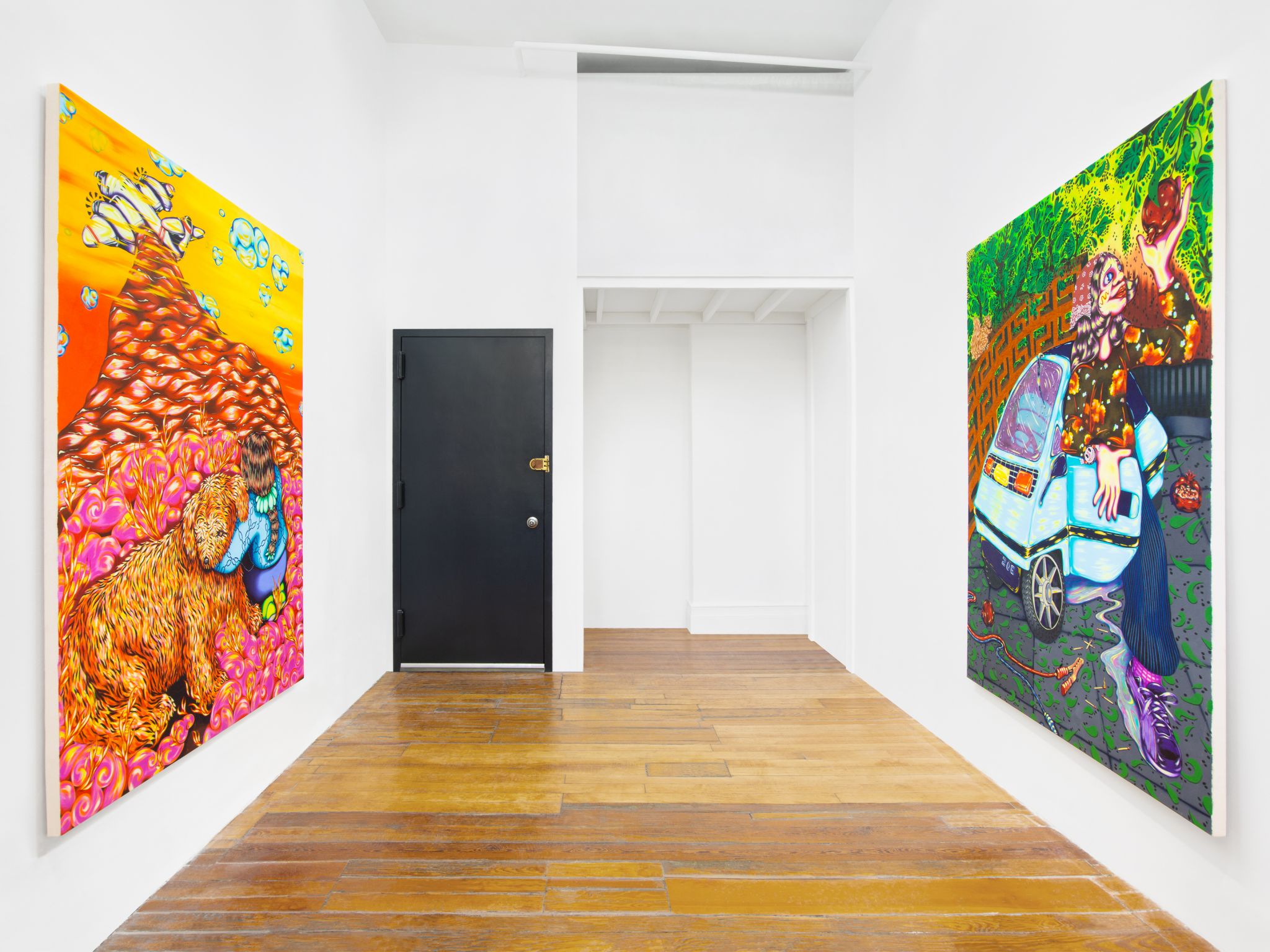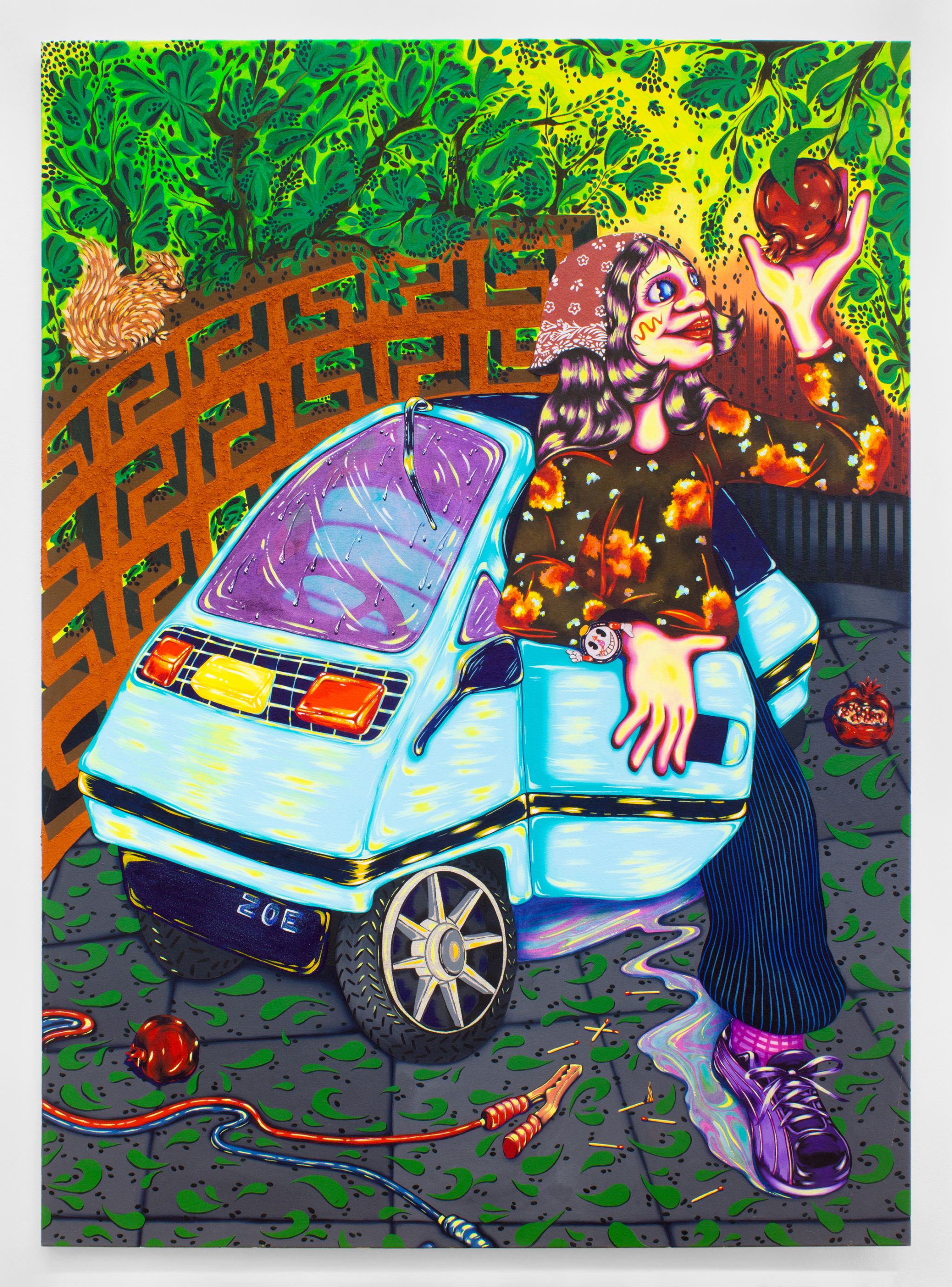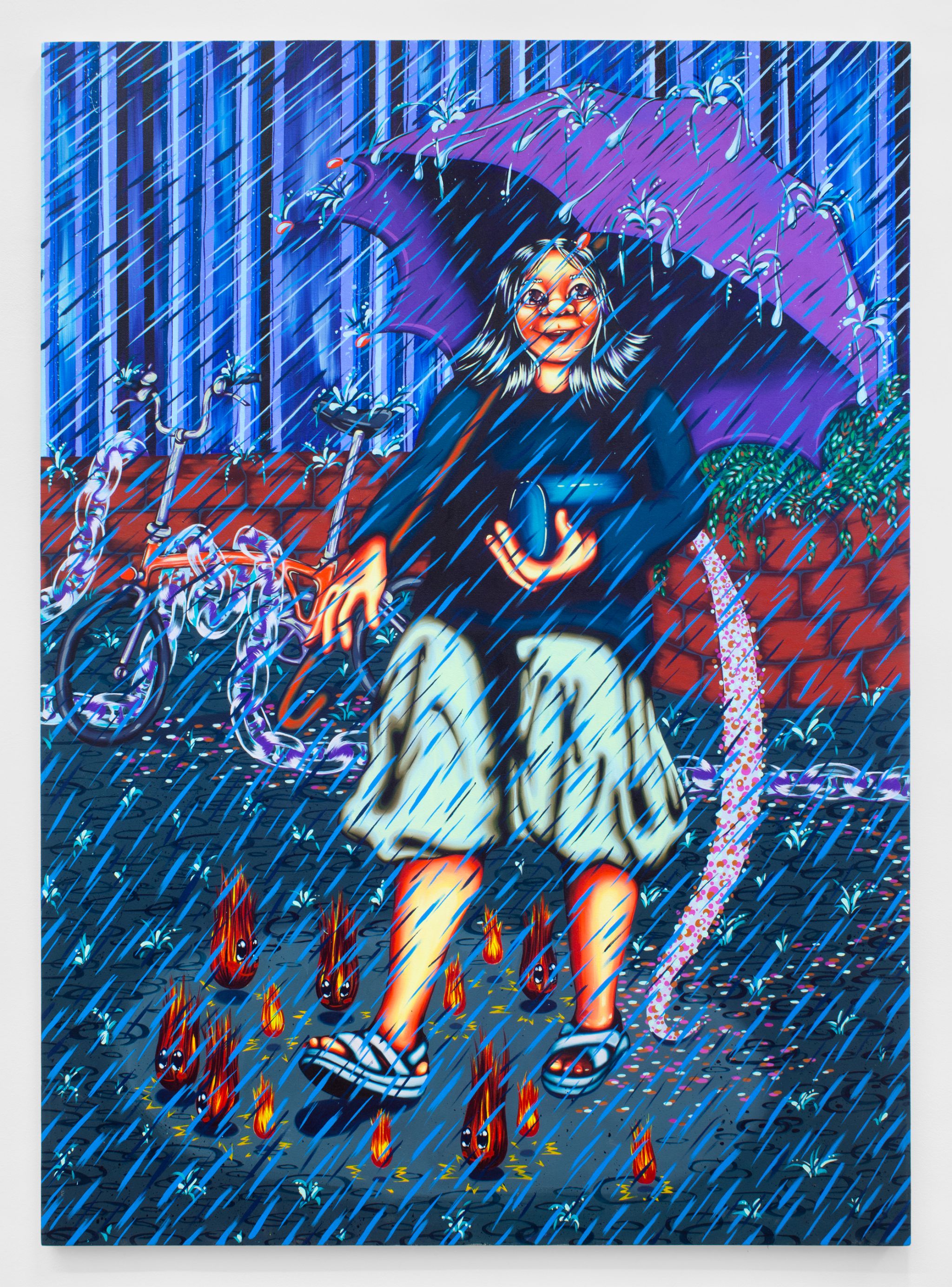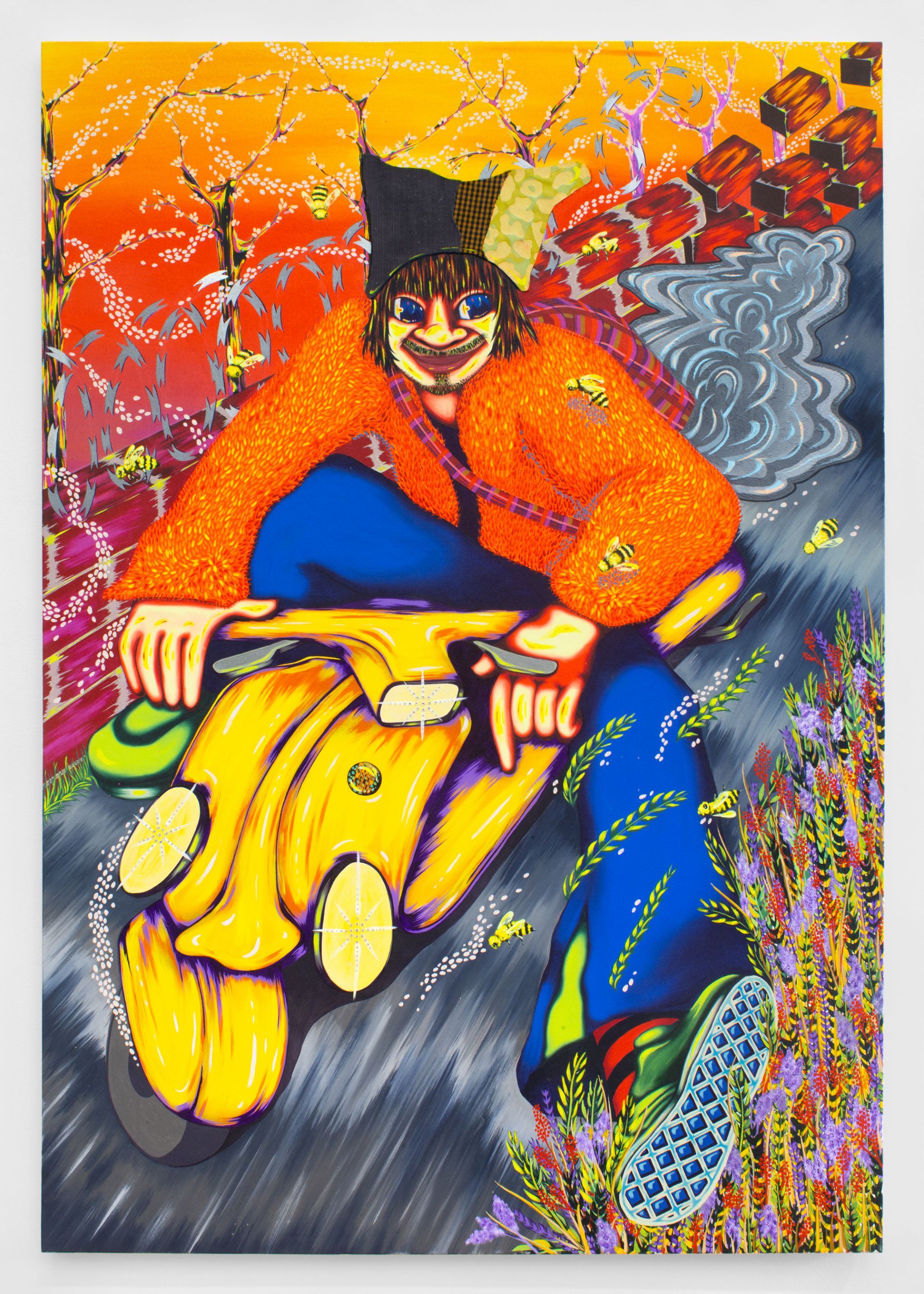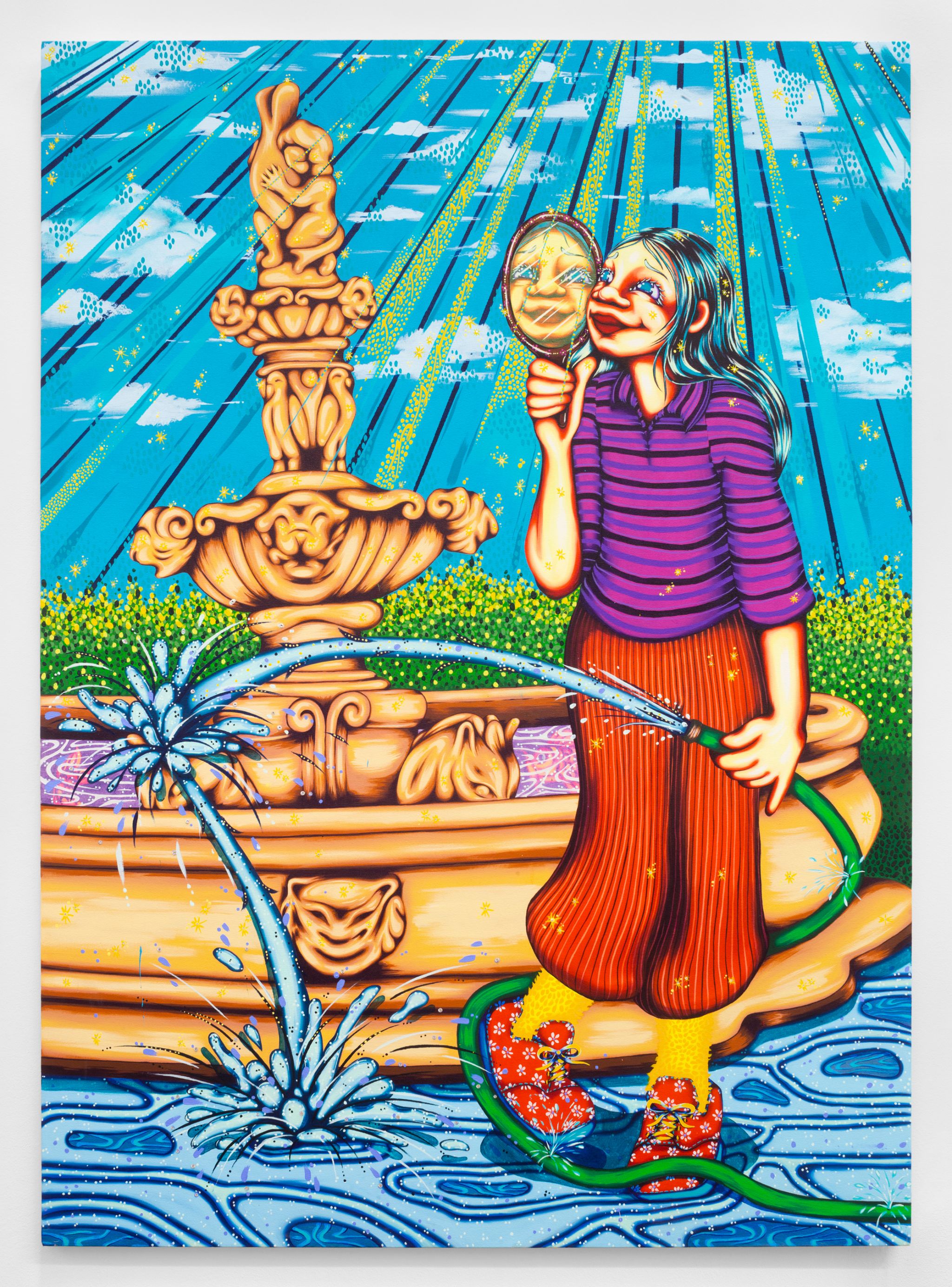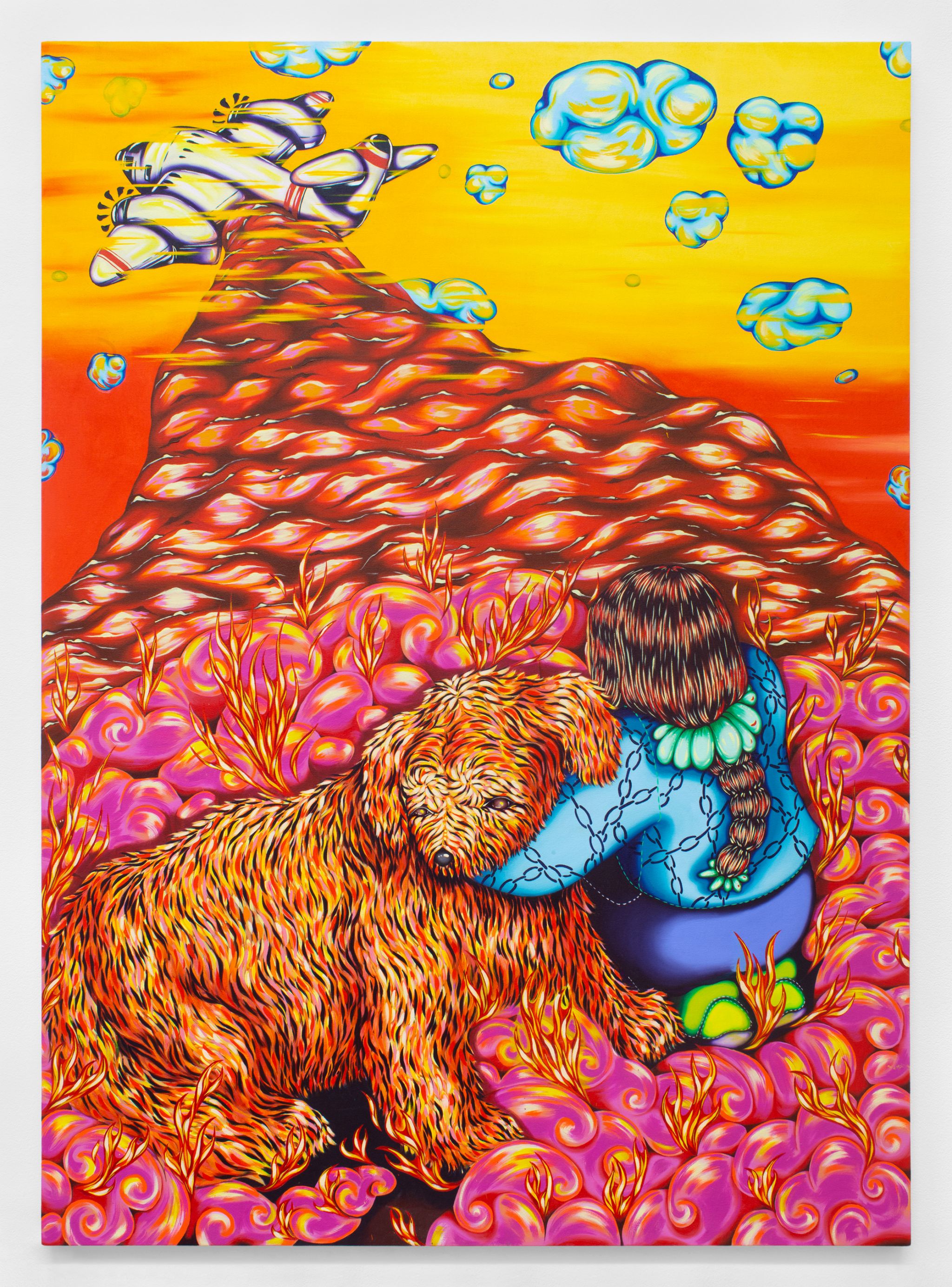A state of maximal energy sets the scene in the world of Zoé Blue M., the New York debut of the Los Angeles-based artist. Blue’s latest paintings in Fault Lines introduce audiences to a form of diaristic realism, where she depicts family members for the first time, using her subject matter to publicly address the most personal parts of herself. A style of narrative figuration that borrows from a range of genres tells the metaphorical and literal story of Blue’s upbringing, one that stylistically weaves between East and West cultures.
For Blue, who grew up in Los Angeles with a French father and a Japanese-American mother, evidence of a cross-cultural upbringing plays heavily in her work, impossible to ignore in her paintings teeming with dreamlike symbols from her childhood. Filling the canvas with swaths of technicolor brushstrokes, Blue experiments with a pastiche of patterns that diversify surfaces to a dizzying level. With a painting style that confronts viewers with saturated mise-en-scènes, Blue’s cartoonish tendencies inspired by anime are coupled with an overwhelming attention to detail, and a sun-soaked palette that can only be birthed in California.
Weather plays a central role in Blue’s canvases, from clear blue skies, a heavy downpour, to smoke-filled orange clouds. Mirroring the reality of Los Angeles, fire always seems to be looming, leaving viewers to question whether her tableaus depict scenarios that are on the brink of disaster, or just narrowly avoiding it. Blue’s figures embody an absent-minded carelessness met with the constant threat of danger, serving as a metaphor for a duality that oscillates between life and death, safety and risk, the physical world and the spiritual one.
Stylistically, the clothing choices each figure wears is a conscious decision that holds significant meaning for Blue. Her deeply-rooted interest in fashion is one that has been passed down by her grandmother to both her mother and brother, who all share an “eccentric” taste in dress. For Blue, getting dressed is much more than an aesthetic choice, it is both a homage to the generations that precede her and an expression of cultural and self-identity.
Style is substance, as materiality translates to a larger statement on how the things we wear can contain layered meanings. The use of rhinestones and garment scraps on Blue’s paintings adds a layer of texture and personal history that can only be fully experienced in the flesh. Hidden meanings and subtext translates beyond the canvas—for Blue, clothing serves as the fabric for connecting the self to the outside world. Within the seams there lies a tool for understanding our roots and a way to feel tangibly human.
Like the mirrors in Blue’s paintings, the narcissism of getting dressed lends itself to the tension between watching oneself and being watched. Without having to say anything at all, the way we present ourselves speaks volumes—but looking beneath the veneer, there’s chaos wanting to escape.
—Dalya Benor
